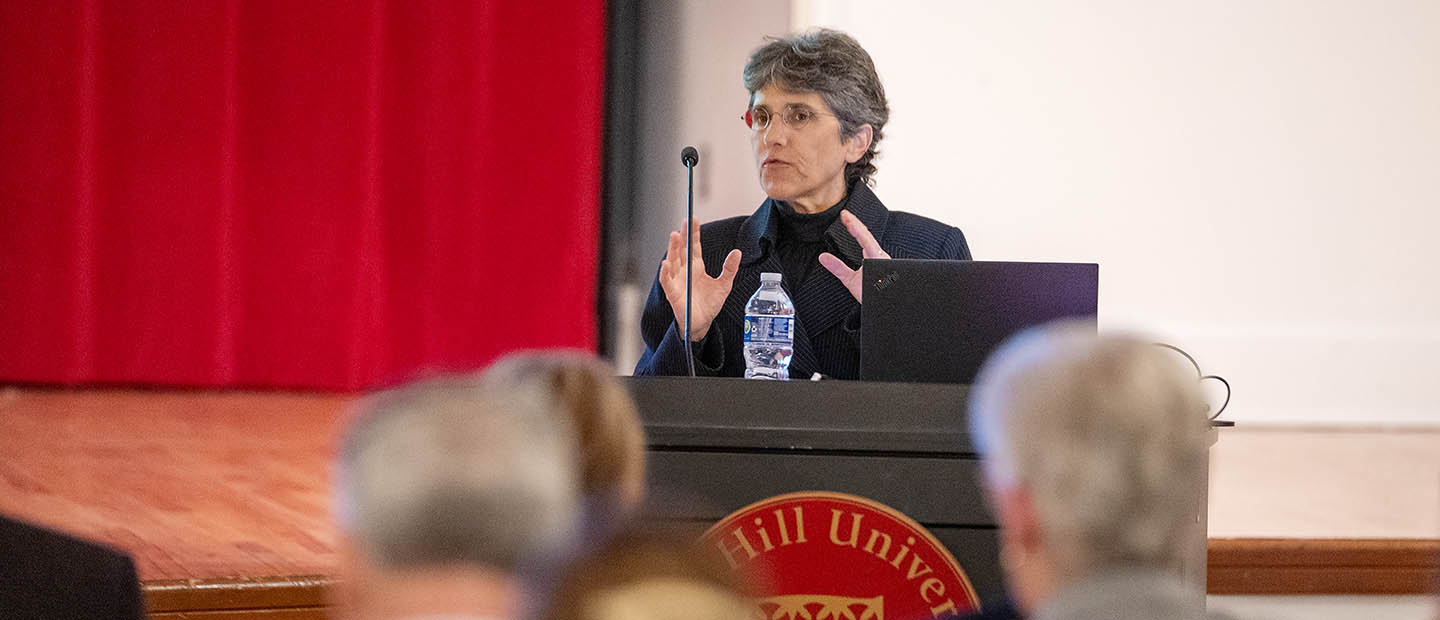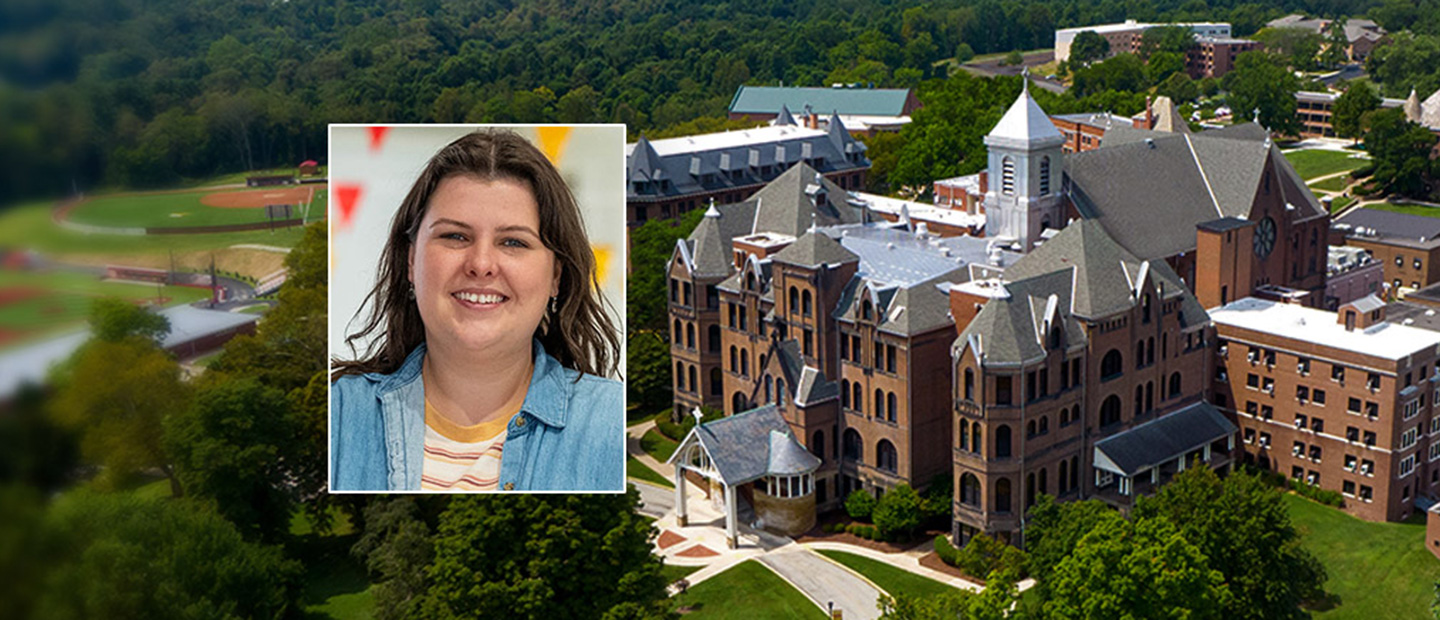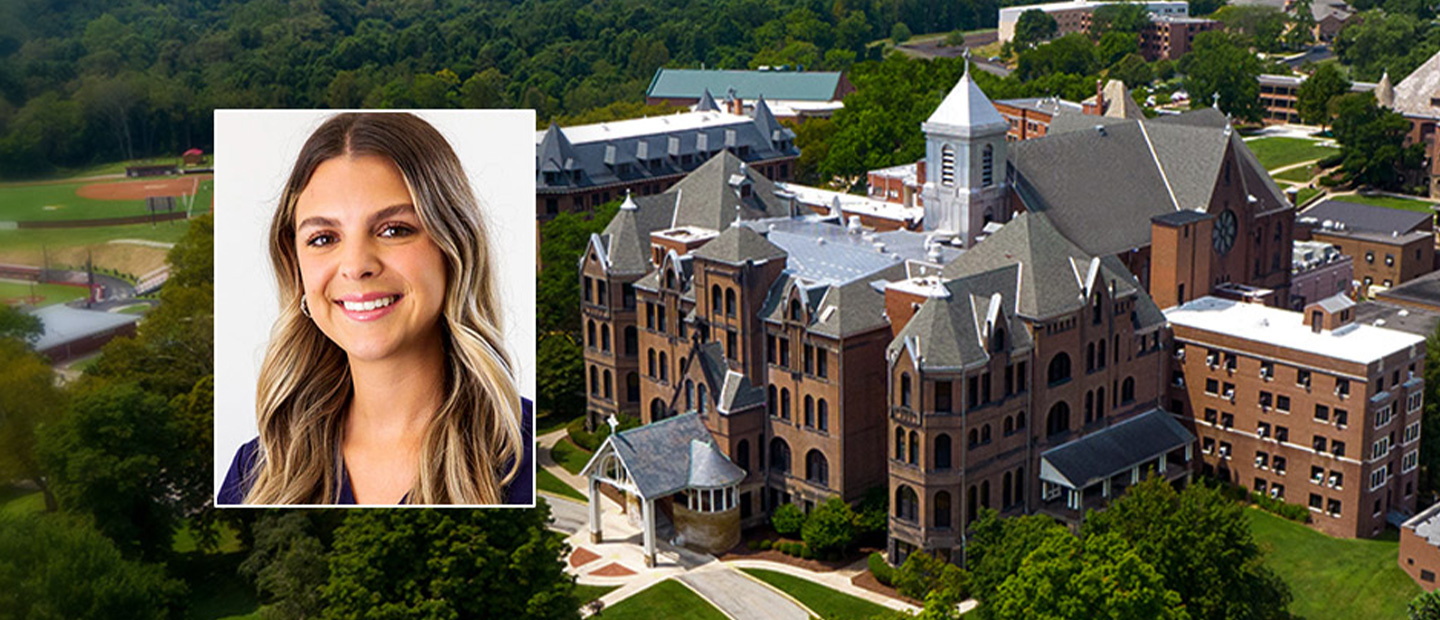Trustee Rob DeMichiei Offers ʻLeadership Lessonsʼ During Farrell Lecture
While becoming Chief Financial Officer of UPMC at age 39 wasn’t something that Rob DeMichiei expected, the steps he took get there began early in his career.
The Seton Hill Trustee spoke to the audience of students, faculty, staff, and alumni both in person and via Zoom in April during this year’s Farrell Lecture, an annual lecture series made possible by a leadership gift in 2007 by the Farrell Family Foundation of Pittsburgh. Seton Hill University’s School of Business and the Wukich Center for Entrepreneurial Opportunities, in partnership with the university’s Alumni College, sponsored the event, held in Cecilian Hall.
His presentation, titled “Leadership Lessons for the Next Generation,” touched on his takeaways from the leaders he encountered during his 35 years in Corporate America and how he applied them to both himself and his teams.
“There’s no overnight success,” DeMichiei said. “I’ve always pursued difficult assignments and difficult tasks so I could develop and grow and be the best that I could be.”
After his 16-year tenure at UPMC, DeMichiei retired as Executive Vice President and Chief Financial Officer of UPMC at age 55. Earlier in his career he held executive finance roles with the General Electric Company (GE) and Price Waterhouse. He is currently on the Seton Hill University Board of Trustees as Chair of the Finance and Business Affairs Committee and a member of the Executive Committee and Investment Committee. DeMichiei also serves on a number of other area boards.
Though DeMichiei values his career, it wasn’t the only area of his life in which he committed significant time to being successful.
“My greatest achievement, far more important than what you see on this screen, is the family I have,” he said.
His family includes his wife Amy, their four children, and grandchildren. His son, Chris DeMichiei, is a 2014 graduate of Seton Hill University.
“Invest in relationships. Everybody should plant seeds, the younger you are the more seeds you need to plant,” DeMichiei said. “Five years later, 10 years later, 20 years later – you look at all the seeds you’ve planted, the relationships you’ve developed and you’re going to see a forest.”



